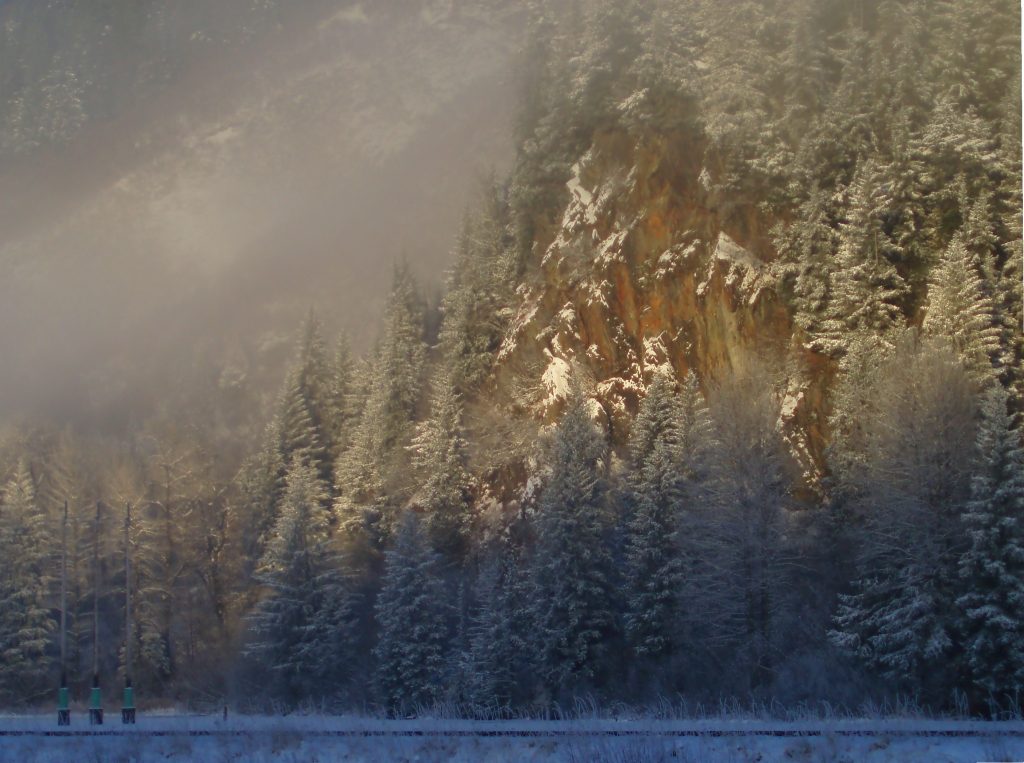
CC BY-SA 2.0 LIttleBIGsis https://flic.kr/p/shcE1
Credit: CC BY-SA 2.0 LIttleBIGsis https://flic.kr/p/shcE1
While Florida, Texas, and Puerto Rico recover from a devastating hurricane season, another natural disaster rages on the other side the continent. Following a record-hot summer and dry conditions, the northwestern United States and Canada have experienced one of the most intense fire seasons on record. As global temperatures rise, scientists will need a better understanding of how high-latitude, boreal forest ecosystems respond to changing fire regimes. A study by Bonanza Creek Long Term Ecological Research (BNZ-LTER) researchers found that boreal wildfires can displace dominant tree species and alter understory bryophyte populations, ultimately changing forest composition, structure, and function.
Boreal forests in Alaska’s interior are mainly composed of coniferous trees, whose open canopy and low leaf litter allow bryophytes to thrive and carpet the forest floor. Bryophytes are non-vascular plants, such as liverworts, hornworts, and mosses that dominate the understories of boreal forests. These small plants play an important role in maintaining ecosystem health and resiliency since they help build organic layers, enhance soil insulation, retain soil moisture, increase soil nitrogen, and re-establish permafrost after fire events. Ecological disturbances, such as fires, can alter canopy composition, changing bryophyte communities and thus forest ecosystem structure, function, and resiliency.
The researchers measured bryophyte abundance and species composition, as well as soil organic layers, moisture, and temperature in 83 stands in Alaska’s interior forests. All 83 stands had similar environmental conditions, but ranged from 8 to 163 years in post-fire age and varied in canopy dominance between coniferous, deciduous, and mixed forest types.
During the early successional stage (6 to 20 years after the fire), all 83 sites had high bryophyte abundance and similar species composition. However, during the mid- to late-successional stages (over 20 years after the fire), increased leaf litter production in deciduous forest stands resulted in fewer bryophytes. Coniferous stands in the mid to late successional stage had more bryophyte abundance, but tended to be dominated by feather mosses, which enhance soil organic layers, nitrogen fixation, carbon storage, permafrost stability, and further support coniferous abundance.
As boreal wildfires increase in their severity and frequency, the potential to shift towards mixed and deciduous tree dominance could be reinforced by changes in the understory community.
Source: Mélanie Jean, Heather D. Alexander, Michelle C. Mack, Jill F. Johnstone. Patterns of bryophyte succession in a 160-year chronosequence in deciduous and coniferous forests of boreal Alaska. Canadian Journal of Forest Research, 2017, 47:1021-1032, https://doi.org/10.1139/cjfr-2017-0013










